U.S. Revolving credit (credit cards) grew by $14.7 billion (13.9%) in August, up from the $10.4 billion gain recorded in July.
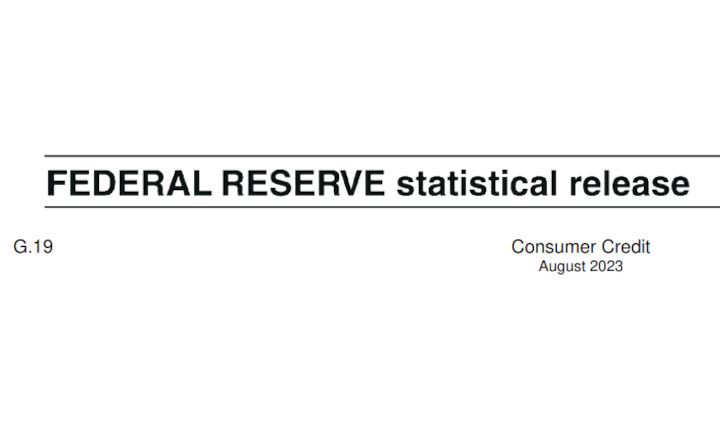
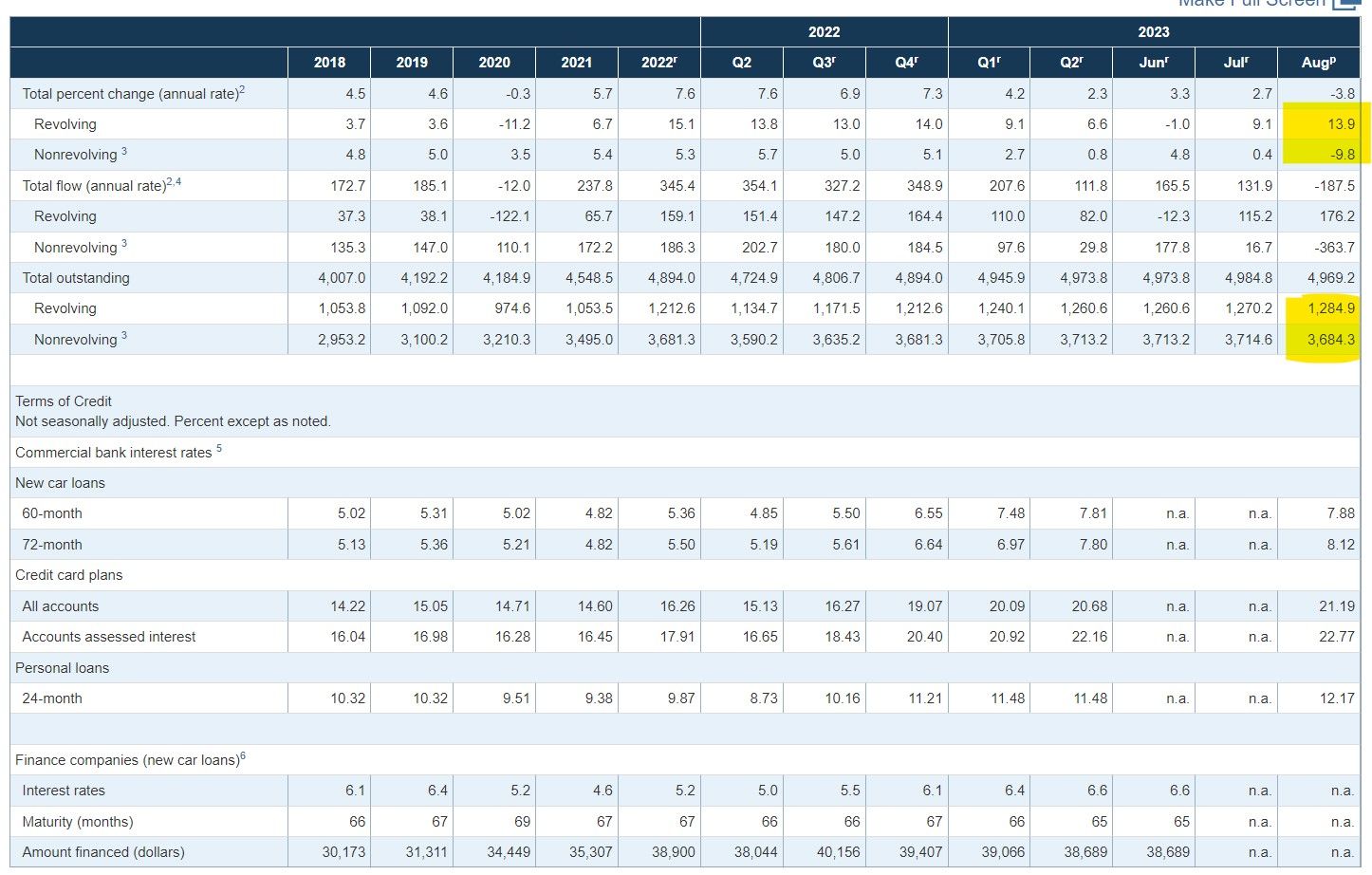
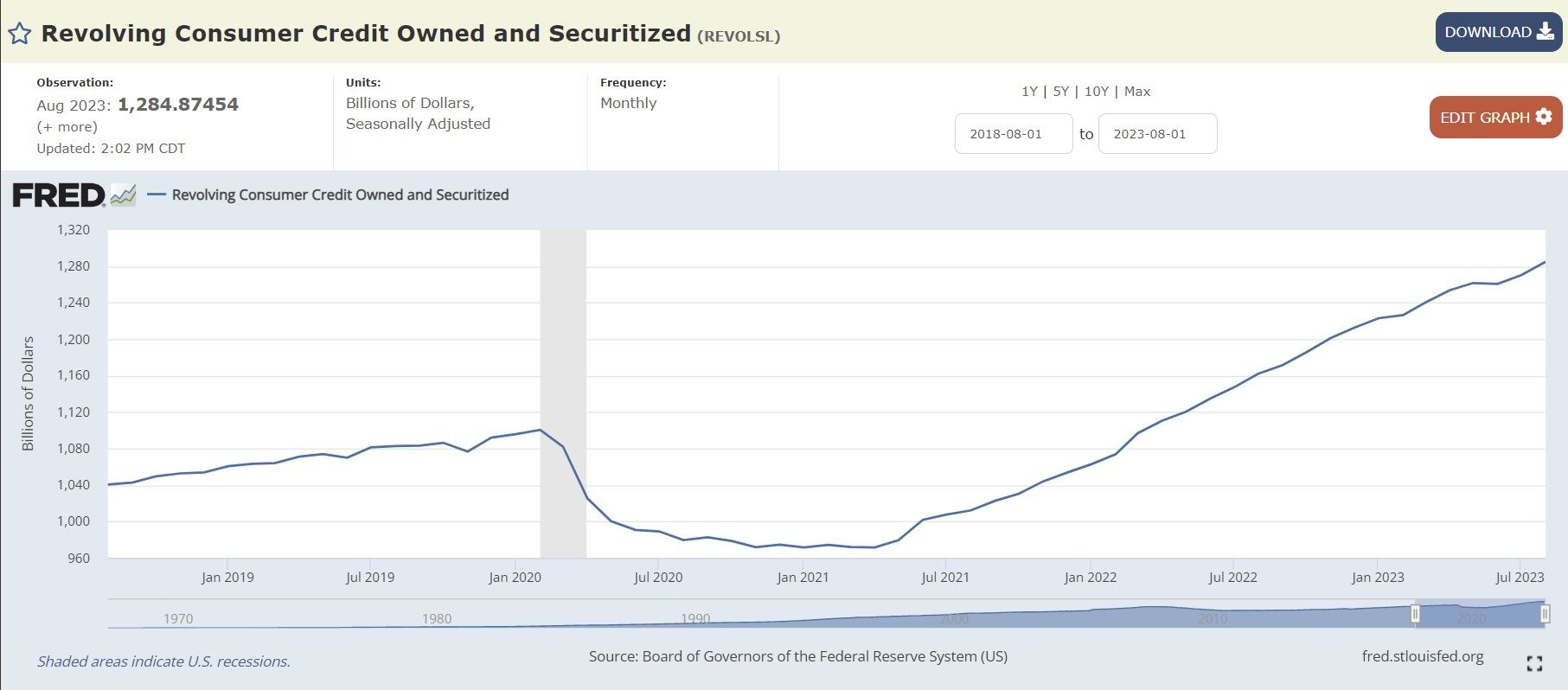
In August, consumer credit decreased at a seasonally adjusted annual rate of 3.8 percent. Revolving credit increased at an annual rate of 13.9 percent, while nonrevolving credit decreased at an annual rate of 9.8 percent.
Consumer spending is a major factor in the U.S. economy and its GDP (total value of goods and services produced in a country over a specific period). When consumers spend more, businesses sell more goods and services, which can lead to increased production, more hiring, and overall economic growth.
While taking on debt allows consumers to spend beyond their immediate earnings (for instance, buying a house with a mortgage or purchasing goods with a credit card), there's a limit to how much debt is sustainable.
However, as we have previously covered, expectations for future credit availability deteriorated in August, with the share of respondents expecting it will be harder to obtain credit in the year ahead increasing.
Additionally, the Fed's Beige Book August 2023 shows "Some Districts highlighted reports suggesting consumers may have exhausted their savings and are relying more on borrowing to support spending."
So growth could slow if folks continue pile up too much debt and are then forced to cut back on this spending but boy are they still piling it on!
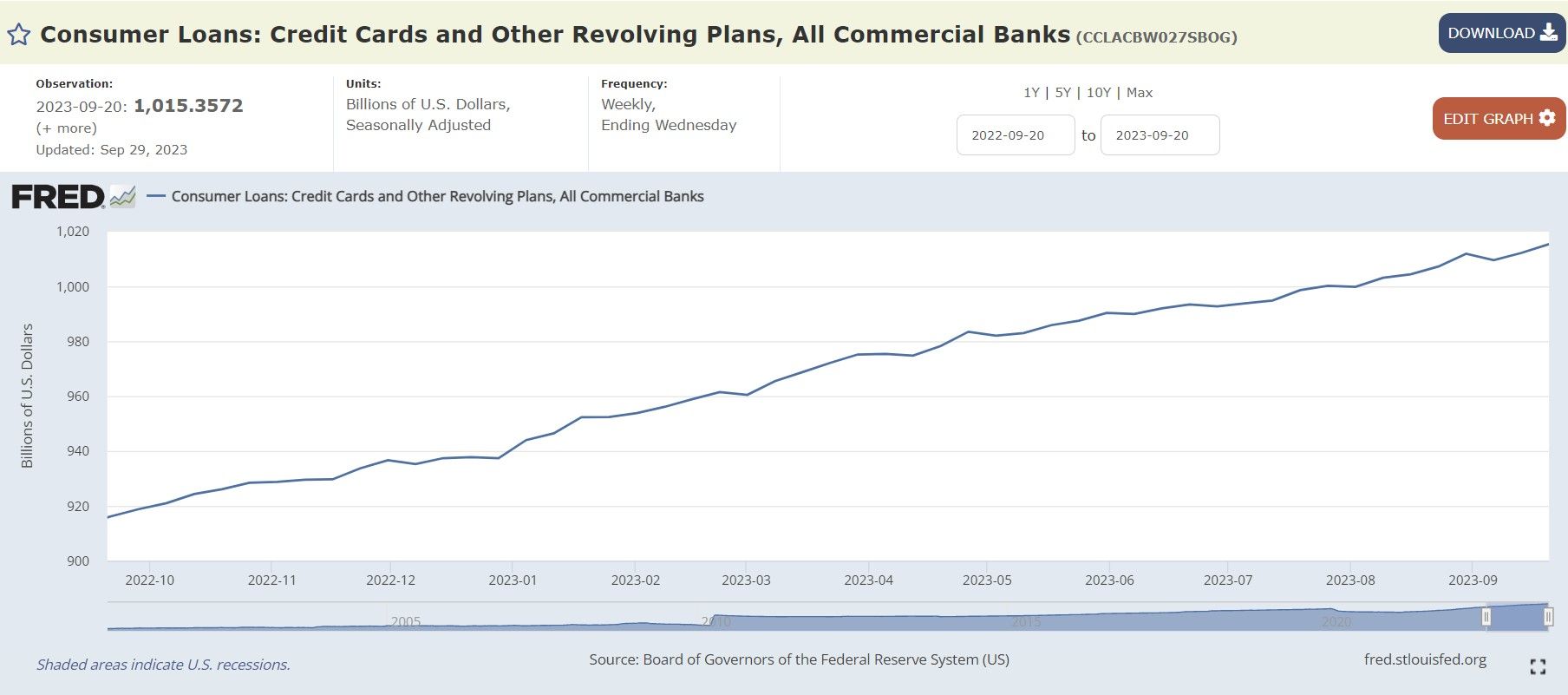
It just keeps climbing over 1 trillion all at killer interest:
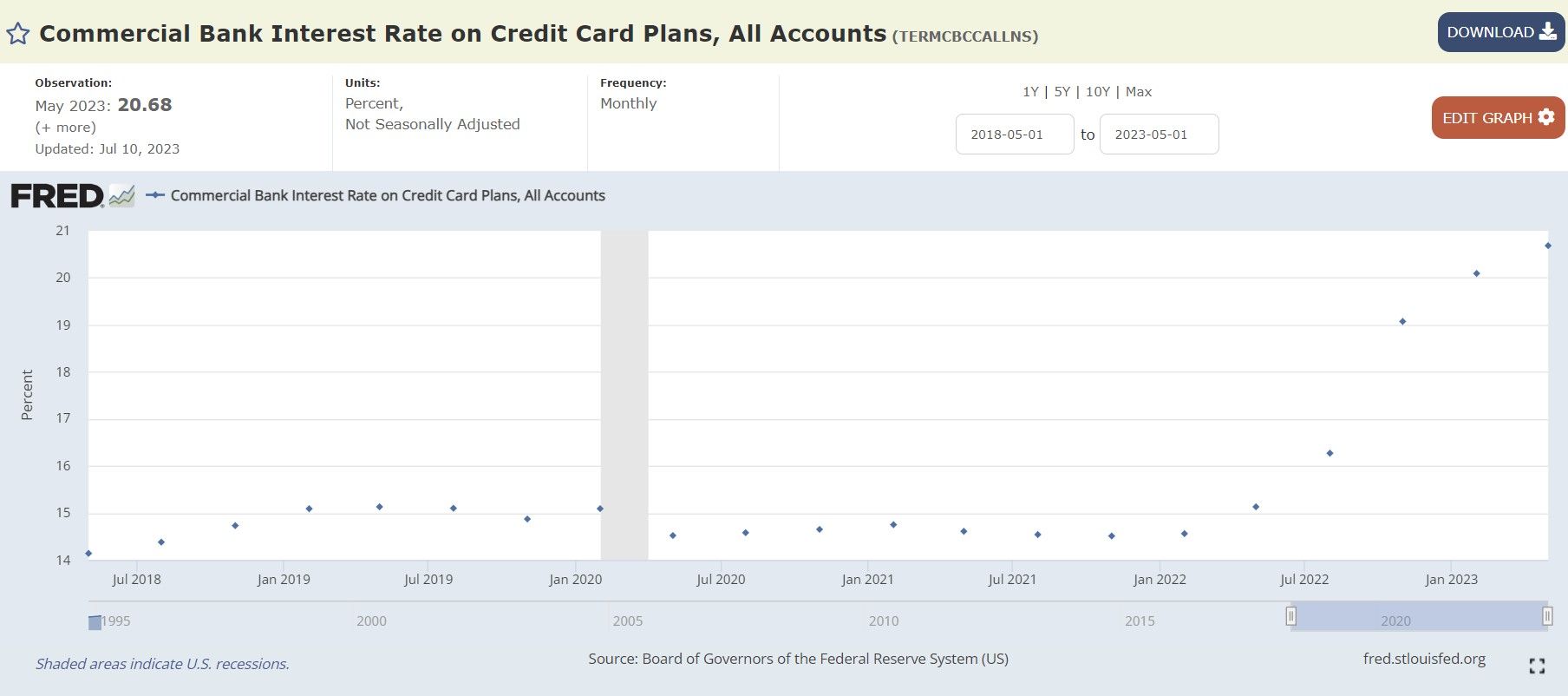
Delinquencies are on the rise as well:
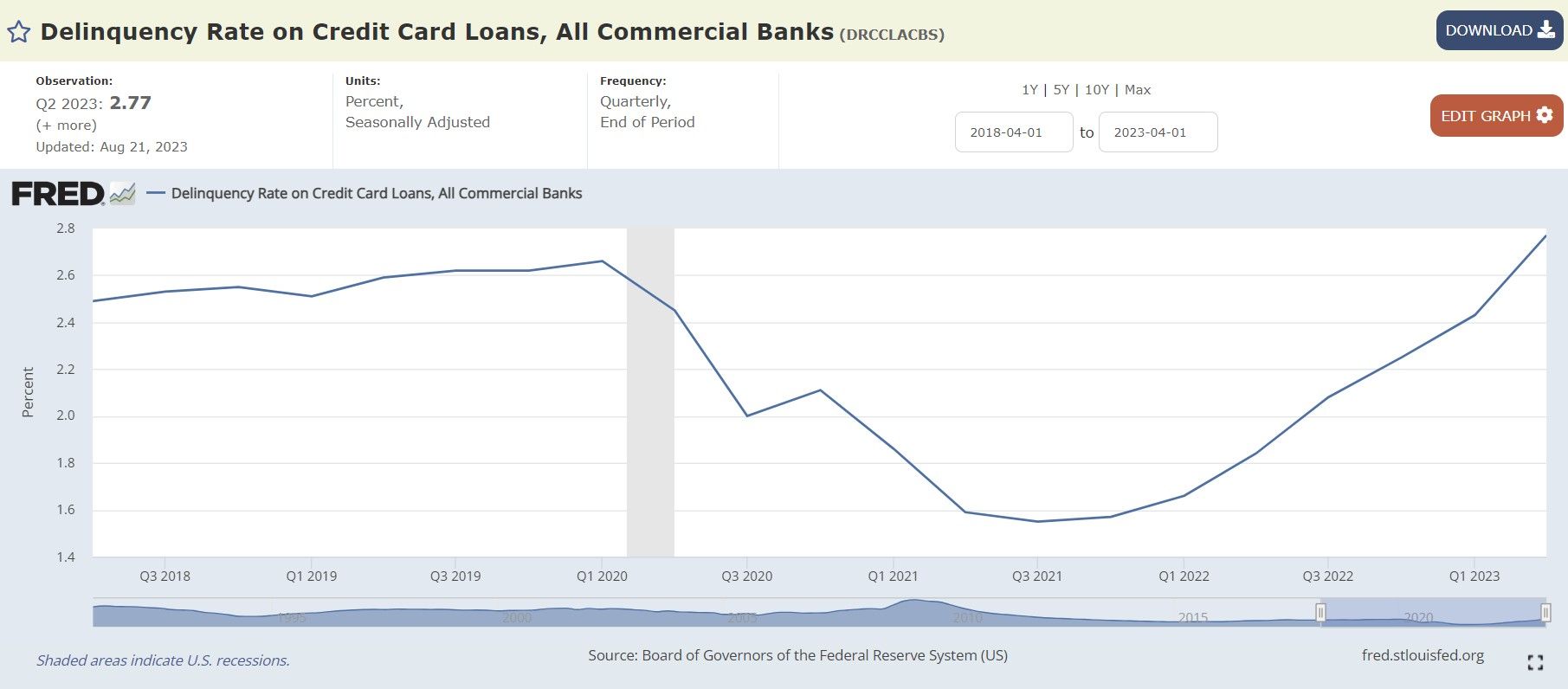
Notice how the delinquency rates are starting to creep up?
The overall well-being of consumers' financial situations, even with increasing debt, is largely attributed to a robust job market and today's jobs report shows the market is still hot: Total nonfarm payroll employment rose by 336,000 in September, and the unemployment rate was unchanged at 3.8 percent--analysts had been expecting 170,000 new workers and 3.7% unemployment...
Individuals face the greatest challenges in repaying their debts when they're unemployed. If unemployment rates stay low and job opportunities persist, it seems most borrowers can generally keep up with their loan and minimum credit card payments, even with depleted savings.
A concern is that while payrolls grew faster, gains in wages are slowing. Year-over-year gains in average hourly earnings slowed to 4.2% in September from 4.3% in August and starting to grow closer to prepandemic levels.
A combination of slower wage growth, higher interest rates, and depleted savings indicate that the headwinds are mounting against consumers and this will likely play heavily on spending moving forward.
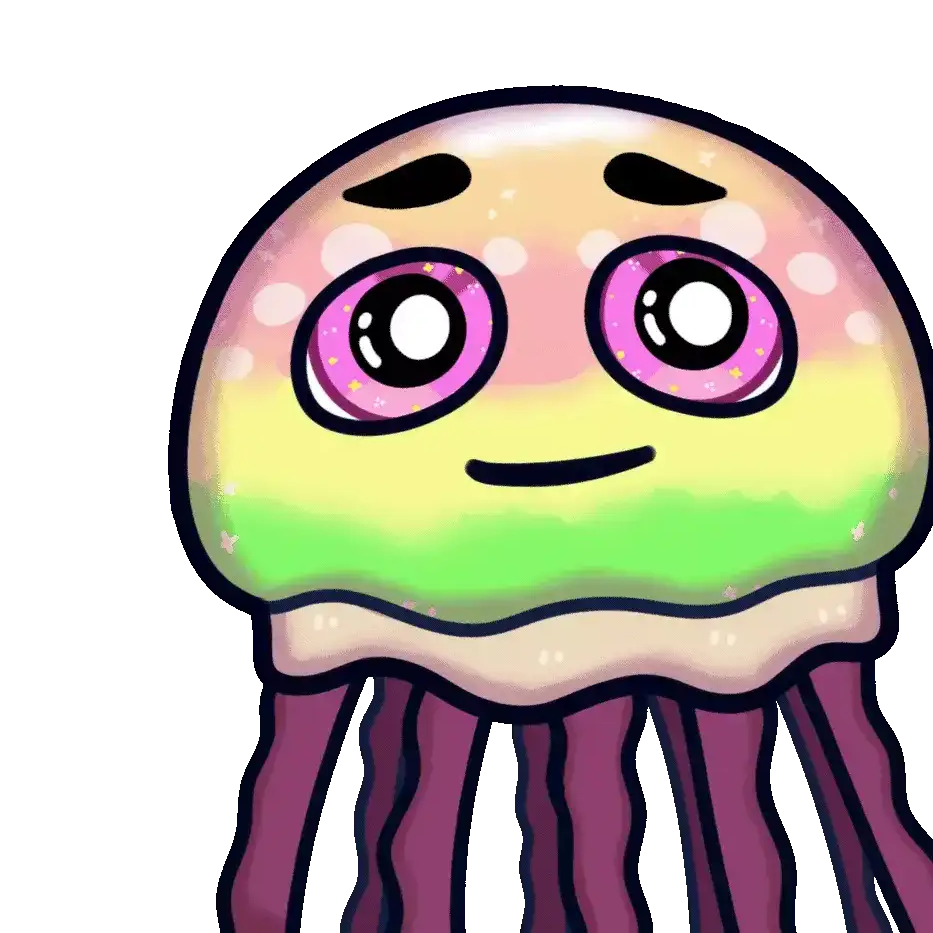
TLDRS:
- U.S. Revolving credit (credit cards) grew by $14.7 billion (13.9%) in August, up from the $10.4 billion gain recorded in July.
- A combination of slower wage growth, higher interest rates, and depleted savings indicate that the headwinds are mounting against consumers and this will play heavily on spending moving forward.
- Consumer spending is a major factor in the U.S. economy and its GDP...
- I believe inflation is the match that has been lit that will light the fuse of our rocket.



